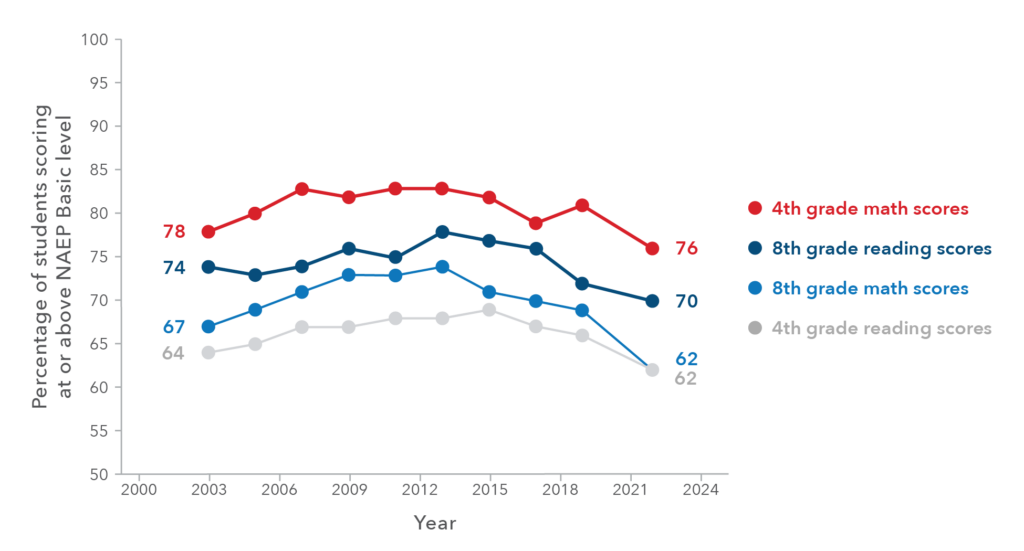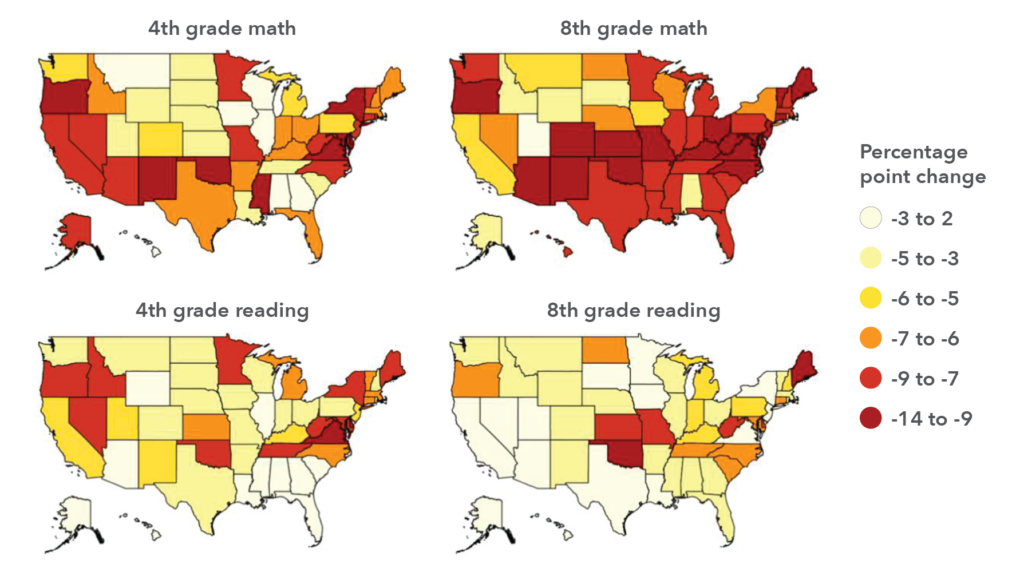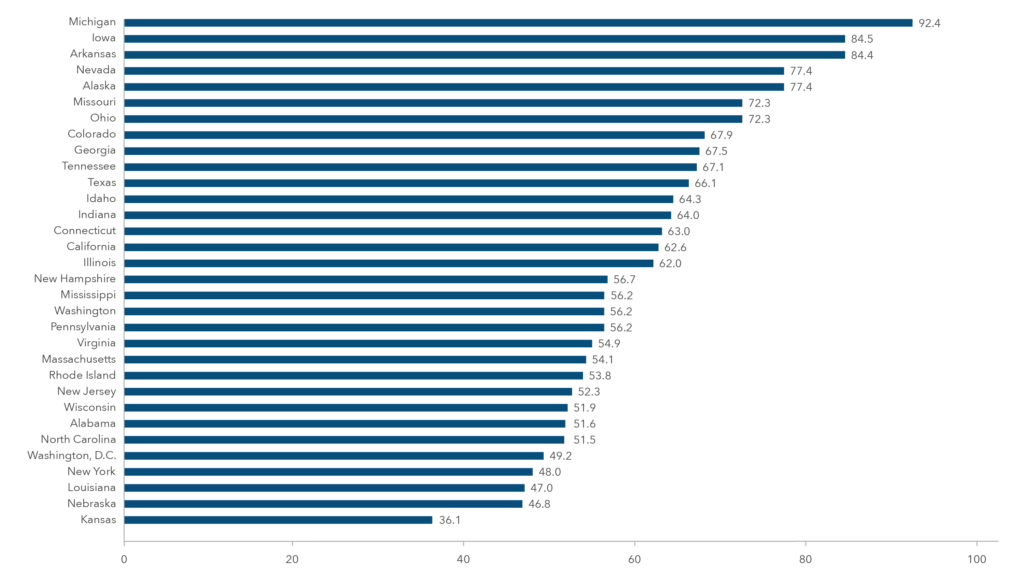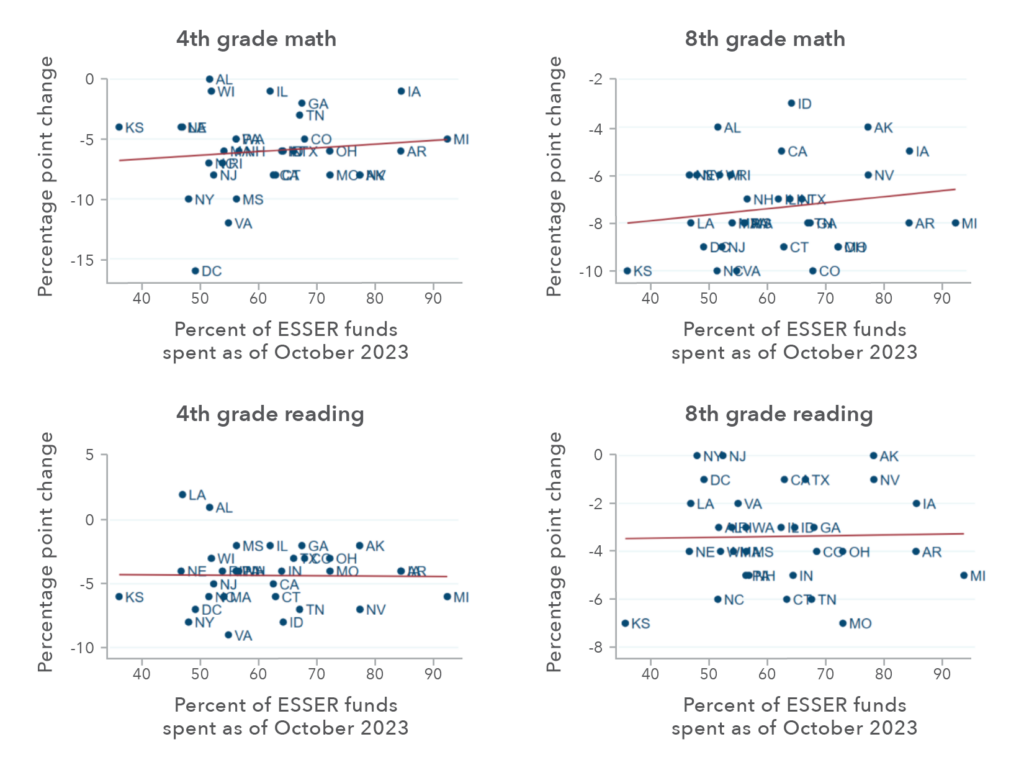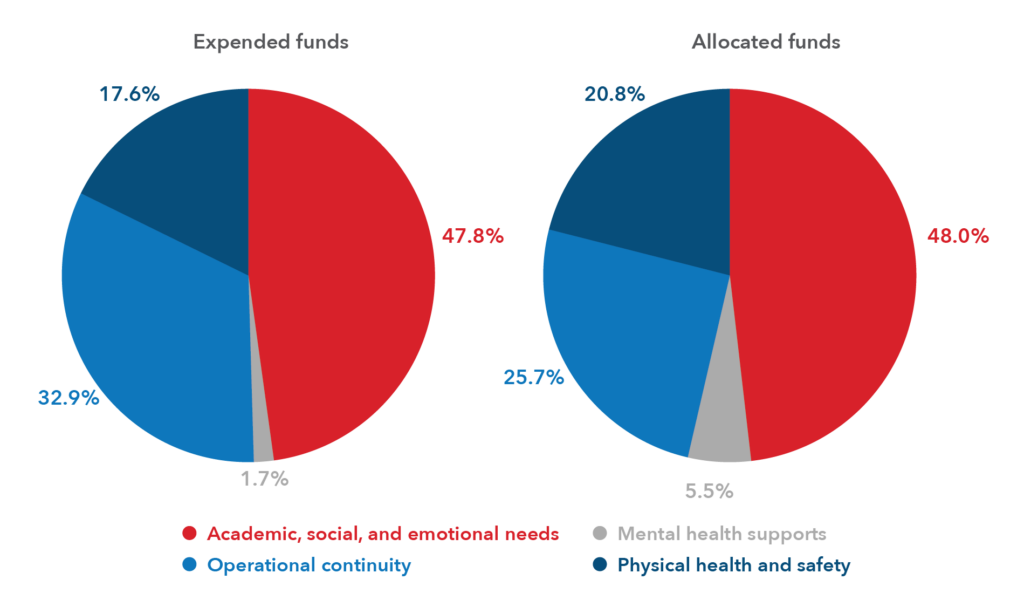WASHINGTON, DC, JANUARY 22, 2024 – The Aspen Economic Strategy Group (AESG) today announced five new members have joined the sixty-five-member, bipartisan group of distinguished leaders and thinkers who share the goal of promoting evidence-based solutions to significant challenges confronting the American economy.
Established in 2017 and co-chaired by former U.S. Secretaries of the Treasury Henry M. Paulson, Jr. and Timothy F. Geithner, the AESG fosters the exchange of economic policy ideas while promoting bipartisan relationship-building among current and future generations of policy leaders in Washington.
The five new members joining the AESG are:
John H. Cochrane – Rose-Marie and Jack Anderson Senior Fellow, Hoover Institution, Stanford University
Blair W. Effron – Cofounder, Centerview Partners
Steven Rattner – Chairman and CEO, Willett Advisors LLC
Natasha Sarin – Associate Professor of Law, Yale University
Minouche Shafik – President, Columbia University
“We are thrilled with the addition of these new members, whose experience and expertise will bring new, valuable perspectives to the AESG,” said AESG director Melissa S. Kearney. “AESG members share a commitment to advancing evidence-based, bipartisan solutions to our nation’s most pressing economic challenges. This mission is more important than ever as the US continues to face a number of challenges that threaten the country’s economic resilience.”
The full list of AESG members can be viewed here.
New Member Biographies:
John H. Cochrane is the Rose-Marie and Jack Anderson Senior Fellow of the Hoover Institution at Stanford University. His publications include the books The Fiscal Theory of the Price Level and Asset Pricing. He has written articles on monetary policy, inflation, dynamics in stock, bond, option, and foreign exchange markets, and their relation to business cycles, macroeconomics, health insurance, time-series econometrics, financial regulation, and other topics. He writes occasional Op-eds, mostly in the Wall Street Journal, blogs as “the Grumpy Economist” at https://www.grumpy-economist.com/ and as part of the Hoover Goodfellows video/podcast with H.R. McMaster and Niall Ferguson. Cochrane is also a Senior Fellow of the Stanford Institute for Economic Policy Research (SIEPR), Professor of Finance and Economics (by Courtesy) at Stanford GSB, a Research Associate of the National Bureau of Economic Research and former director of its Asset Pricing program, and an Adjunct Scholar of the CATO Institute. He is a past President and Fellow of the American Finance Association, and a Fellow of the Econometric Society. He has been an Editor of numerous journals including the Journal of Political Economy. Awards include the Bradley Prize, the TIAA-CREF Institute Paul A. Samuelson Award for Asset Pricing, the Chookaszian Endowed Risk Management Prize, the Faculty Excellence Award for MBA teaching and the McKinsey Award for Outstanding Teaching. Previously, Cochrane was the AQR Capital Management Distinguished Service Professor of Finance at the University of Chicago Booth School of Business, and before that at its economics department. Cochrane earned a Bachelor’s degree in Physics at MIT, and a Ph.D. in Economics at the University of California at Berkeley. Outside of academic and economic pursuits, Cochrane is a competition sailplane pilot, and enjoys cycling, windsurfing, skiing, and other outdoor activities.
Blair W. Effron is cofounder of Centerview Partners, a leading independent investment banking and advisory firm with offices in New York, London, Los Angeles, Palo Alto, Paris, and San Francisco. The firm’s 75 partners and six hundred professionals provide assistance on mergers and acquisitions, financial restructurings, general advisory, valuation, and capital structure to companies, institutions, and governments. Since its founding in 2006, the firm has advised on nearly $4 trillion in transactions and ranks among the most active banking firms globally in strategic advisory. The firm works with public and private companies across a range of sectors including the consumer, energy, financial, general industrial, health care, media, retail, technology, and telecommunications industries. Mr. Effron serves on the boards of trustees of the Council on Foreign Relations (vice chairman), Lincoln Center, the Metropolitan Museum of Art, New Visions for Public Schools, the Partnership for New York City, and Princeton University. He also sits on the advisory board of the Hamilton Project, an economic policy initiative affiliated with the Brookings Institution, and is a Member of the President’s Intelligence Advisory Board. Effron holds a BA from Princeton University and an MBA from Columbia Business School. He resides in New York with his wife Cheryl and has three children.
Steven Rattner is Chairman and Chief Executive Officer of Willett Advisors LLC, which manages the personal and philanthropic investment assets of Michael R. Bloomberg. In addition, he is a Contributing Writer for the Op-Ed page of The New York Times and the Economic Analyst for MSNBC’s Morning Joe. Previously, Mr. Rattner served as Counselor to the Secretary of the Treasury and led the Obama Administration’s successful effort to restructure the automobile industry, which he chronicled in his book, Overhaul: An Insider’s Account of the Obama Administration’s Emergency Rescue of the Auto Industry. Until February 2009, Mr. Rattner was Managing Principal of Quadrangle Group LLC, a private investment firm that under his leadership, had more than $6 billion of assets under management. Before forming Quadrangle in 2000, Mr. Rattner was with Lazard Frères & Co., where he served as Deputy Chairman and Deputy Chief Executive Officer. Mr. Rattner joined Lazard Frères in 1989 as a General Partner from Morgan Stanley, where he was a Managing Director. Before beginning his investment banking career in 1982 with Lehman Brothers, Mr. Rattner was employed by The New York Times for nearly nine years, principally as an economic correspondent in New York, Washington and London. Mr. Rattner has served as a board member or trustee of a number of public and philanthropic organizations including the Educational Broadcasting Corporation (Chairman), Metropolitan Museum of Art, Brown University (Fellow), Mayor’s Fund to Advance New York City (Chairman), Brookings Institution and the New America Foundation. He is a member of the Council on Foreign Relations. Mr. Rattner graduated in 1974 from Brown University with honors in economics and was awarded the Harvey Baker Fellowship. Mr. Rattner is married to Maureen White, who is a Senior Fellow at the Johns Hopkins School of Advanced International Studies, and they have four children.
Natasha Sarin is an Associate Professor of Law at Yale Law School with a secondary appointment at the Yale School of Management in the Finance Department. Previously, she served as Deputy Assistant Secretary for Economic Policy and later as a Counselor to Treasury Secretary Janet Yellen at the United States Treasury Department, where her work focused on narrowing the gap between the taxes owed by the American public and those collected by the Internal Revenue Service. Before joining the Biden Administration, she was a Professor at the University of Pennsylvania Carey Law School and the Wharton School. Her work has received both academic and popular press attention and has been covered by various media outlets, including The New York Times, The Economist, and the Financial Times, among other publications. She is currently a contributing columnist for The Washington Post. Prior to joining the faculty at Penn, she earned a JD from Harvard Law School; a PhD in Economics from Harvard University; and a BA in Ethics, Politics, and Economics from Yale University.
Minouche Shafik is the 20th President of Columbia University in the City of New York and Professor of International and Public Affairs at the School of International and Public Affairs. She is an economist, policymaker, and higher education leader who has spent over three decades in leadership roles across a range of prominent international and academic institutions. From 2017 to 2023 she was President and Vice Chancellor of the London School of Economics and Political Science (LSE), a world-leading center for research and teaching in the social sciences. Before her tenure at LSE, Shafik served as Deputy Governor of the Bank of England, where she led work on fighting misconduct in financial markets and managed a balance sheet of about $600 billion; Deputy Managing Director of the International Monetary Fund, navigating turbulence surrounding the European debt crisis and the Arab Spring; Permanent Secretary of the United Kingdom’s Department for International Development, where she helped secure the UK’s commitment to giving 0.7% of GDP in aid and focused on fighting poverty in the poorest countries in the world; and the youngest-ever Vice President of the World Bank, where she worked on the institution’s first-ever report on the environment, led work on infrastructure and private sector investment, and advised governments in post-communist Eastern Europe. She is a trustee of the Bill & Melinda Gates Foundation. Shafik received her BA from the University of Massachusetts Amherst, MSc from LSE, and DPhil from St Antony’s College, Oxford. She holds a life peerage and membership of the House of Lords, a damehood for services to the global economy, an honorary fellowship of the British Academy, and several honorary degrees. She is married to Raffael Jovine, a molecular biologist, with whom she has two college-aged children and three adult stepchildren.
###
The Aspen Economic Strategy Group (AESG), a program of the Aspen Institute, is composed of a diverse, bipartisan group of distinguished leaders and thinkers with the goal of promoting evidence-based solutions to significant U.S. economic challenges. Co-chaired by Henry M. Paulson, Jr. and Timothy Geithner, the AESG fosters the exchange of economic policy ideas and seeks to clarify the lines of debate on emerging economic issues while promoting bipartisan relationship-building among current and future generations of policy leaders in Washington. More information can be found at https://economicstrategygroup.org/.
The Aspen Institute is a global nonprofit organization whose purpose is to ignite human potential to build understanding and create new possibilities for a better world. Founded in 1949, the Institute drives change through dialogue, leadership, and action to help solve society’s greatest challenges. It is headquartered in Washington, DC and has a campus in Aspen, Colorado, as well as an international network of partners. For more information, visit www.aspeninstitute.org.


